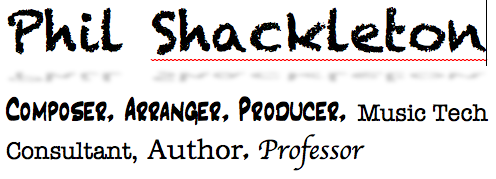The Cape Fear New Music Festival invited me to compose a piece for their ensemble for the festival that took place on April 18, 2015.
In response, I composed Cape Fear Moods which has two movements, Romance and Parade.
The ensemble is unusual. It’s instrumentation is piano, flute, alto sax, trumpet, tuba and percussion (pitched or unpitched).
Romance may evoke a melancholy mood for some listeners, perhaps with a sense of mystery and ambiguity. It is initially based on a chord progression where each is vertically diatonic, but with each chord being a complex sonority within its diatonic scale, with no apparent relationships between the successive harmonies. What isn’t immediately obvious is that there is a note that all of the sonorities have in common, which eventually becomes a pedal as the various melodies unfold. The entire progression is transposed up a fourth, and now, as the pedal continues at the new pitch, a blue ornamental harmony precedes the appearance of each of the vertically diatonic sonorities, as ever more complex melodies, and eventually contrapuntal relationships emerge linking and elaborating the shifting harmonic areas. The original pitch level and the “up a fourth” level alternate, with brief interludes, for most of the movement, in what some listeners may be able to identify as a very stretched, very elaborated dominant to tonic structure in the deep background. The movement ends on one of the blue ornamental harmonies, not one of the diatonic ones, befitting its overall ambiguous nature. This piece has a significant vibes part, both bowed and with mallets.
Parade is, on the surface, not subtle at all. It’s a good old fashioned mix of dixieland, cakewalk, honky-tonk, and ragtime, sort of a very bent version of the sort of thing you might have heard in a New Orleans parade in 1920 or so. The subtlety comes in the harmonic language, which is, in some sense, polytonal/polychordal jazz, with the tuba often implying one key, the harmony in the piano implying another (though it’s never quite clear if that’s true or not), the wind instruments suggesting melodically presented polychordal extensions of chords from the key that the piano isn’t quite actually sticking to, with the whole thing linked by very short breaks that rarely seem to end when expected. The drummer and the tuba sometimes seem confused about just when the next phrase is scheduled to begin. While the harmonic language gets more and more bent, and the dixie texture gets more and more frenetic, the whole thing stomps on to an almost classical tin pan alley ending, which only seems to be in one key if you aren’t listening too closely. The music may make more sense to you if you plant your tongue firmly against your cheek.
The harmonic language of both of these movements is an extension of common procedures used by post-romantic and film composers, wherein there is a basic harmony that is ornamented with many passing and neighboring harmonies, often parallel passing and neighboring triads moving quickly over the top surface of some underlying harmonic foundation. What gives these movements their sound is that the passing and neighboring harmonies are not triadic, but based on some common rootless jazz voicings floating above it all without apparent relationship to what’s going on underneath, somewhat as a John Williams movie score might feature rapidly passing triads in the high woodwinds in ornamentation of an underlying chord in the brass or strings.
You can listen to a synth mockup of the piece on the Listen tab at the top of this page. As time permits, I’ll get a recording of the performance up on the site.
